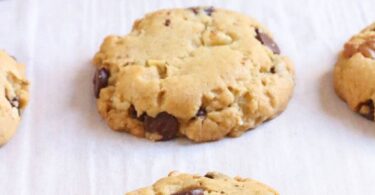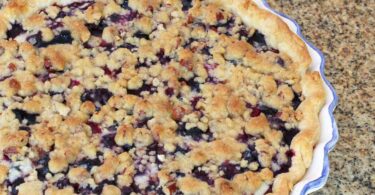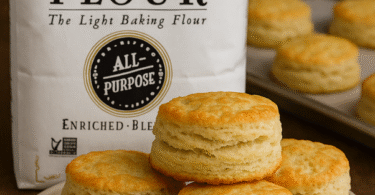A creamy ricotta filling with a hint of lemon and almond is baked inside of a sweet Italian pie pastry. Typically served on Easter, but not exclusively, this Ricotta Pie is sure to be the star of the show at any meal.
Sweet Italian Ricotta Pie
Nothing screams Occasions in my family quite like a Sweet Ricotta Pie. With its lemon-scented Italian pie pastry (also known as Pasta Frolla) and its creamy ricotta cheese filling, it’s a simple pie, but one everyone will absolutely love.
Let’s Talk About That Ricotta Filling
Before we get into some details and tips for making it, I really wanted to address the texture of a ricotta pie.
First, let’s talk about what ricotta is. Modern-made ricotta is a cheese that is produced simply by adding acid into milk, heating it, and “breaking it” so that the milk separates into curds and whey. The whey is strained out from the curds, and what you are left with is fresh ricotta. The longer you strain ricotta, the drier the ricotta is. This information is important for a few reasons.
If you are using a lower quality (read: cheap) ricotta, you likely have ricotta that hasn’t been strained very well. If you don’t take the additional step to strain it at home overnight, you may be left with a watered-down filling that is a bit too soft.
Additionally, the texture of your pie may be a bit off. In general, ricotta has a grainy texture to it; after all, it’s made of curds, which are coagulated milk solids. But lower-quality ricotta that isn’t well strained will have more defined grains which may be less than ideal for this pie.
In the recipe, I’m offering a few tips for how to combat this. In addition, if you wanted a very smooth filling, without the defined grainy texture, I’m sharing how to whip it in the notes of this recipe to get it to be a bit more creamy.
I am including this in the notes as opposed to a mandatory instruction because I find that ricotta with a small grain has a lovely texture and is quite appealing in this pie. However, speaking from experience, I do know that when some people try this pie, they are surprised by the grain of the ricotta. That’s why I made mention of it here.
Making Pasta Frolla
Pasta Frolla is an Italian shortcrust pastry. It’s easy to make, tastes amazing and because of the lower water content, it can be made and rolled out right away! The dough will be soft, but it’s quite easy to work with right after it’s been made.
However, I do recommend freezing the pie dough briefly before it is blind-baked, to ensure it doesn’t slide into the pie plate. And yes, you do need to blind bake this pie. If you don’t, the bottom pastry won’t bake through, and nobody wants a soggy bottom.
Pasta frolla is made in the food processor, and it takes all of about 5 minutes to throw together.
Options for the Top Pie Crust
There are two options for the decorative top crust. It may be a little obvious that I have a clear preference for which one is best. But first, let me explain that when this pie is baked, the ricotta filling puffs up and expands in the crust.
One option is to make a lattice top on the pie. It presents as a pretty pie (keep scrolling below the recipe and I’ve included a photo of a lattice top for this pie). If you do make a lattice, you might end up with a few broken lattice strands due to the expansion of the ricotta filling. You can dust the pie with a layer of powdered sugar to distract for some of the cracks, while still showcasing the lattice top.
Or, the better alternative is to make this a double-crust pie with a decorative fork-lattice design on it. Only, the scoring on the pastry isn’t just decorative, it serves a purpose. The scoring of the pastry directs the pastry where exactly to crack during the expansion of the ricotta. Then, once the pie cools down and sinks back, you can hardly tell there was any cracking at all.
I definitely recommend using the double crust. Take your time scoring the pastry with the fork as this makes a difference and guiding the pastry to break in those weak points as the ricotta expands.
How to Tell When It’s Fully Baked
Like other custard pies, this Ricotta Pie can be tricky to tell when it is fully baked. A custard pie will still be a bit jiggly in the center when it is fully cooked, but it will fully set up after it is cool. This filling will also puff up quite a bit as it cooks.








Leave a Comment